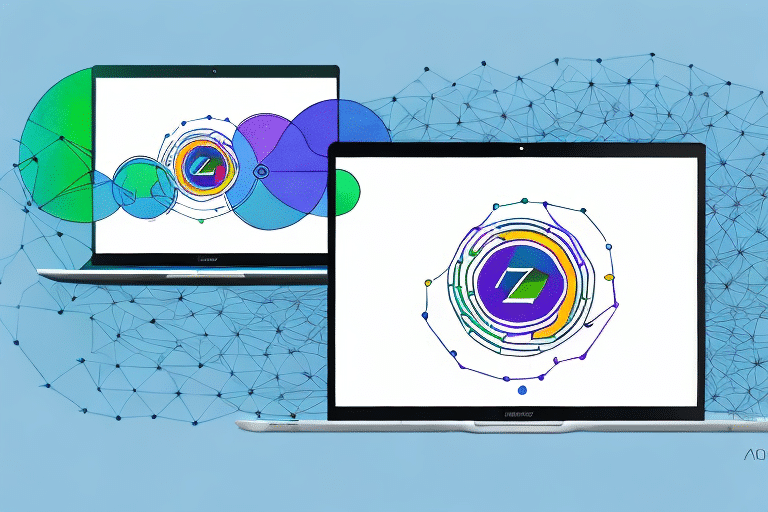Connecting and Optimizing LSO in Zoho Books
If you're using Zoho Books to manage your business finances, understanding and optimizing your LSO (Last Sales Order) system is crucial. This guide explores the importance of LSO, step-by-step setup in Zoho Books, best practices, common pitfalls, and advanced strategies to maximize its benefits.
Understanding LSO in Zoho Books
LSO is a feature in Zoho Books that tracks the latest sales order for each customer. It helps you stay on top of your orders, manage customer relationships, and streamline your workflow. By connecting LSO to Zoho Books, you can view the last sales order for each customer on their contact page, invoices, and reports.
LSO also enables you to identify customers who haven't placed an order recently, allowing you to reach out and encourage new purchases, thereby increasing sales and improving customer retention.
Additionally, LSO can be customized to fit your specific business needs, such as tracking sales orders based on date range or product category. This flexibility ensures that LSO aligns with your business operations effectively.
Why LSO is Important for Your Business
LSO offers several key benefits:
- Order Tracking: Keeps track of customer orders for efficient product and service delivery.
- Customer Relationship Management: Maintains and enhances relationships by keeping customers engaged.
- Operational Efficiency: Streamlines workflow and reduces errors, ensuring smooth business operations.
Moreover, analyzing LSO data provides valuable insights into customer behavior, informing marketing and sales strategies. According to a Small Business Trends report, businesses that leverage data-driven strategies are 5 times more likely to make faster decisions than their competitors.
Setting Up LSO in Zoho Books: Step-by-Step Guide
Step 1: Enable Last Sales Order Tracking
Navigate to the Settings tab and select Sales Orders. Then, enable the Last Sales Order Tracking feature.
Step 2: Add LSO Field to Templates
Include the LSO field in your sales order template to display it on invoices and other relevant documents.
Step 3: Customize LSO Settings
Access Advanced Settings to choose criteria for tracking sales orders, such as date ranges or product categories, and set the frequency for updating LSO data.
Setting up LSO effectively allows you to monitor pending, fulfilled, and overdue sales orders, aiding in inventory management, order fulfillment, and customer service. This structured approach can lead to better business decisions and improved financial performance.
Best Practices for Optimizing Your LSO in Zoho Books
- Regularly update your LSO data to ensure accuracy.
- Identify and reach out to inactive customers with targeted marketing campaigns.
- Integrate LSO with your CRM for enhanced customer relationship management.
Segmenting your customer base based on LSO data allows for personalized marketing, while regular analysis of LSO data can reveal trends and patterns that inform strategic decisions.
Common Pitfalls to Avoid When Managing Your LSO in Zoho Books
- Failing to update LSO data regularly, leading to inaccuracies.
- Neglecting to customize LSO settings for optimal performance.
- Ignoring the potential of LSO to enhance customer relationships and drive sales.
Additionally, ensure proper training for your staff to effectively use the LSO system, which minimizes errors and maximizes its benefits.
Advanced Strategies for Maximizing the Benefits of LSO in Zoho Books
- Create personalized marketing campaigns using LSO data.
- Integrate LSO with inventory management systems to enhance efficiency.
- Automate LSO data updates and notifications to reduce manual errors.
By analyzing LSO data, businesses can identify popular products, loyal customers, and effective marketing campaigns. Centralizing customer interactions across multiple channels within the LSO system provides a comprehensive view of customer history and preferences, leading to improved customer service and increased revenue.
Troubleshooting Common Issues with LSO in Zoho Books
If you encounter issues with your LSO system in Zoho Books, follow these troubleshooting steps:
- Ensure regular updates of LSO data and check for discrepancies.
- Customize LSO settings as needed or contact Zoho support for assistance.
- Verify correct mapping of accounts to prevent errors in financial reports.
Seeking help from a Zoho Books expert can also guide you through complex issues, ensuring your LSO system functions correctly.
Integrating Other Systems with Your LSO in Zoho Books
Integrating LSO with other systems like CRM or inventory management can streamline workflows and reduce errors. To achieve this:
- Use third-party integration tools or hire a developer for custom integrations.
- Ensure data accuracy and consistency by setting up validation rules and performing regular audits.
- Thoroughly test integrations before live implementation to avoid disruptions.
Proper integration enhances the overall functionality of your business systems, leading to more efficient operations.
Key Metrics to Track When Analyzing Your LSO Performance
- Number of customers with LSO data.
- Average time between sales orders for each customer.
- Percentage of sales from returning customers.
Monitoring these metrics provides insights into customer behavior and sales trends, enabling data-driven decision-making.
Using Reports and Analytics to Optimize Your LSO Strategy
Zoho Books offers various reports and analytics tools to help optimize your LSO strategy:
- Track performance metrics to identify areas for improvement.
- Analyze trends to inform marketing and sales strategies.
- Use data-driven insights to enhance the effectiveness and efficiency of your LSO system.
Leveraging these tools allows businesses to refine their LSO strategies, leading to better financial performance and customer satisfaction.
Enhancing Efficiency and Accuracy with LSO in Zoho Books
- Automate LSO data updates and notifications to minimize manual errors.
- Utilize advanced reporting and analytics to monitor performance and pinpoint improvement areas.
- Customize LSO settings to align with your business needs and preferences.
Regularly reviewing and updating LSO data ensures the system remains accurate and reliable, providing trustworthy insights into your business operations.
Understanding the Relationship Between LSO and Other Financial Aspects
LSO is interconnected with various financial aspects of your business, such as cash flow and inventory management. Understanding these relationships helps in making informed decisions that enhance overall financial performance.
Comparing Approaches to Managing and Optimizing LSO in Zoho Books
Different approaches to managing and optimizing LSO include automated updates, customized settings, and integrated systems. Evaluating these methods based on your business needs allows you to choose the most effective strategy for maximizing LSO benefits.




















